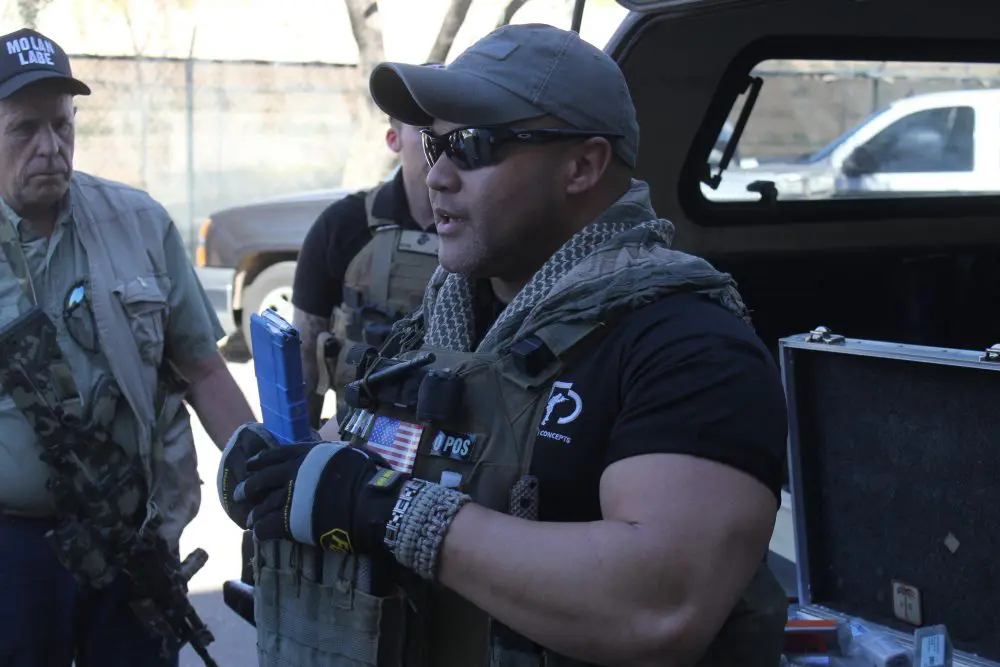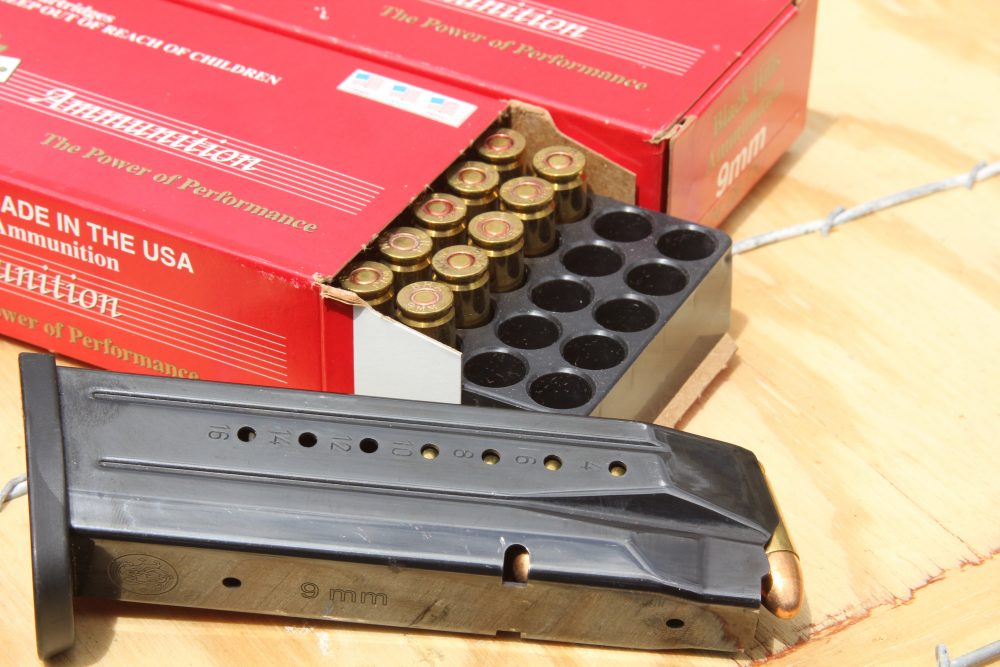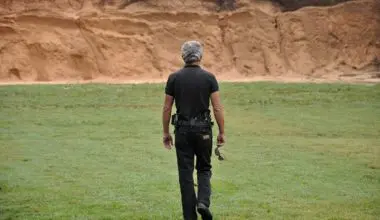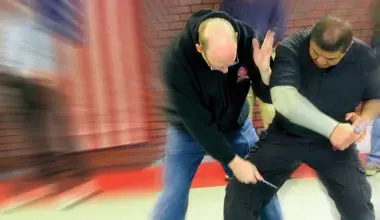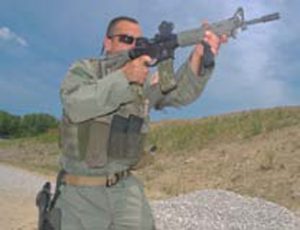
The phrase “Two is one, one is none” may be overused, but it is also valid. Carrying two guns was common when I was a cop in NYPD, and it is a habit that remains with me to this day.
For cops in tactical units and some military involved in Direct Action (DA) missions, the primary weapon (commonly a 5.56x45mm carbine) is supplemented by a pistol, which is used if the primary gun goes down or when working within very confined spaces.
No matter if you are a patrol cop armed with a shotgun, a SWAT cop with an AR, or military doing DA, having the long gun go down during a close-range gunfight can be detrimental to your longevity. You’ve got to do something if you want to stay in the fight, and the “A” answer is to get a working gun in your hand.
While this sounds disturbingly easy, some seem to go out of their way to make it difficult.


Table of Contents
WHEN TO TRANSITION
There are several points to ponder here. The first is to determine when a transition is appropriate. This much is simple. If the big gun goes down for any reason, we transition to the pistol. We may also want to transition to the blaster for tactical reasons, such as when checking a closet or similar small, close-up area to minimize the chances of the bad guy trying to grab the carbine.
Some will state that they can execute a speed reload faster than they can transition to the pistol—and they may be correct.
But consider this. It may not be that you ran the big gun dry. Perhaps your carbine has suffered a Type 3 malfunction, a double feed. This will require remedial action to solve the problem. How much time have you wasted now?
We generally transition to the pistol when in close contact with an opponent. Placing a distance on this is sometimes difficult, but many consider a distance of between 15 to 25 yards as where it should be.
However, many who carry a pistol would be hard pressed to make solid hits on a human at 25 yards. I have seen a gross deterioration in pistol skills in the past decade, and while there may be a lot of reasons for it, the fact remains that few are capable of getting good hits past bad-breath distance.
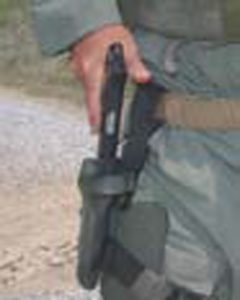
At my training company, E.A.G. Tactical, we teach 15 yards as the imaginary line at which we go to the blaster instead of fixing the long gun. Your mileage may vary.
Once you trip the mental trigger to transition to pistol, you need to prioritize the work.
HOW TO TRANSITION
The very first step is to get the long gun out of the way. The reason for this is simple—we need to be able to engage our opponent with the working gun we have left, the pistol.
Ideally, our long gun will have a tactical sling, which will allow us to reload/ reduce the malfunction and permit us to get a more efficient gun into play after we deal with the immediate threat.
However, there are still those who have parade slings, or worse, no sling at all. This may be the result of poor agency SOP, being obstinate, or not understanding the benefits of reality.

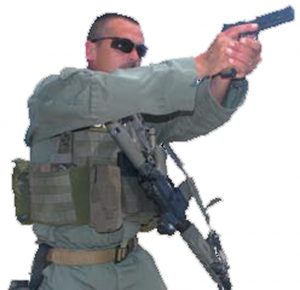
NOSTALGIC INTERLUDE
When dinosaurs walked the earth, we were taught that we must at all costs retain that downed long gun. When I asked what “all costs” meant, I was told that I had to guard that useless gun with my very life. I was befuddled by the sheer stupidity of that statement, but it only increased as I traveled down the path of training.
These instructors advocated holding the useless long gun against your body, clutching it like your infant daughter, barrel elevated.
“Wait,” I protested. “I don’t shoot as well one hand unsupported as I do with two paws on that handgun. Why shortchange myself in a gunfight?”
I was told, forcefully, that if I wasn’t in physical possession of that nonworking long gun, “they” could take it and use it against me.
“But it doesn’t work. How can ‘they’ use it against me or another person?”
This was followed by the usual “shut up, you don’t know nuthin’, we have always done it this way, quit fighting the system” and other words lacking wisdom.
It got no better as time progressed. Others suggested that if you had a sling—this was pre tac-sling days, so we are talking about the simple Parade Sling (carry strap)—you should put your arm through the sling and let the long gun hang from your arm. Terrific. Now I have that seven-pound weight disturbing my shooting.…
And of course, the pièce de résistance was the teaching of looping the sling over your neck. They never told me what the bad guys would be doing when I was involved in all this, but then again, neither could they answer any of my other questions.
To make matters worse, I once worked at a place that taught all of the above. I did, reluctantly, and it hurt.
BACK TO BUSINESS
We have to prioritize all that we do. It is an ongoing process, without end. Our priority in a fight is to win. In order to do that, all else must be cast aside. If the tool that we use in the fight—the long gun—goes down, we need to get a working gun in our hand right now. Nothing can interfere with that.
And once we get that secondary gun out, we have to use it efficiently if we are going to continue the fight.
As a rule, you can fight more efficiently with a pistol if you have both hands on it. Certainly I have never seen anyone who can shoot as well with one hand as they can with two, and if you can shoot better with two hands, why penalize yourself?

The answer is obvious. Get rid of that downed long gun. That’s right, sports fans, it’s a useless item right now, and is only hindering you in your effort to kill the bad guy before he kills you. Let it go—let it drop on the deck. Yeah, I know that most will cringe at this, but you need to get over it and deal with reality. That carbine/shotgun is, at this time, a useless impediment to your continued longevity.
But wait! What about all of those instructors who tell you that you cannot drop that nonfunctioning gun on the deck? After all, they told you the bad guy might pick that gun up and maybe use it against you.
Really? That gun is on the fritz. It is not operable, either because you have run it dry or it is malfunctioned. Even if someone does glom it, of what use will it be to him at that instant?
LET IT GO … REALLY
Let’s look at it another way. Your priority is to win the fight. In order to win the fight, you have to be able to defeat the bad guy, and unless you possess super ninja powers, the thing that’s pressing up against your kidney may be the next best bet.
If you desire to handicap your ability to successfully engage the bad guy by limiting yourself to shooting onehanded while you hang onto a useless gun, then your continued existence will be more a matter of luck than skill.

The choice is blatantly obvious. Get rid of the nonfunctioning long gun. Get the pistol into your hands and win the fight.
And if you cannot efficiently send the perp some Good News, he may indeed get that long gun. He may also get your working handgun that you were unable to use properly as you were hanging onto the long gun.
See the problem?
SLINGS
A tactical sling is a worthy addition. There are three variants: single-point, two-point and three-point. The singlepoint was once very popular, though it’s not used as much now as it was in the past. It is still useful under certain circumstances. The tactical two-point is the best general-purpose sling. The three-point was once the only game in town, but now is seldom seen outside the big military.
If your carbine/shotgun is equipped with a tac sling, life is much easier, but not without issues. Just releasing the gun is popular with some, but the magazine hanging out the bottom of your carbine may be at the proper height to impact Mr. Happy. If that happens, the pain associated with that contact might interfere with your game plan.
SAMPLE TRANSITION
So we would like to be able to guide the carbine down. Here’s one way that works well with a two-point sling.
Upon determining that a transition is necessary, apply the safety and release your firing grip on the carbine with your strong-side hand and drive it down to your pistol.
Your support-side hand maintains control of the front end of the gun, and you guide it down as you rotate the gun outboard. If you are a righthand- dominant shooter, you rotate it so that the ejection port is against your body. This un-traps your hand, as well as laying the two-point sling across the mag in the gun, which may keep it from bumping into you as you move.
The carbine is out of the way of your drawstroke, and if your gear layout is correct, you should be able to access your pistol magazines easily.
To be sure, there are a number of ways to sling the downed carbine. This is the method I prefer and have used enough to feel comfortable teaching it.
Whenever you look at any Tactic, Technique or Procedure (TTP), you need to fully understand how it is implemented and how it fits into the operational context. You also need to understand the limitations of any particular TTP. If it does not add to what you are doing, you may need to find something else.
